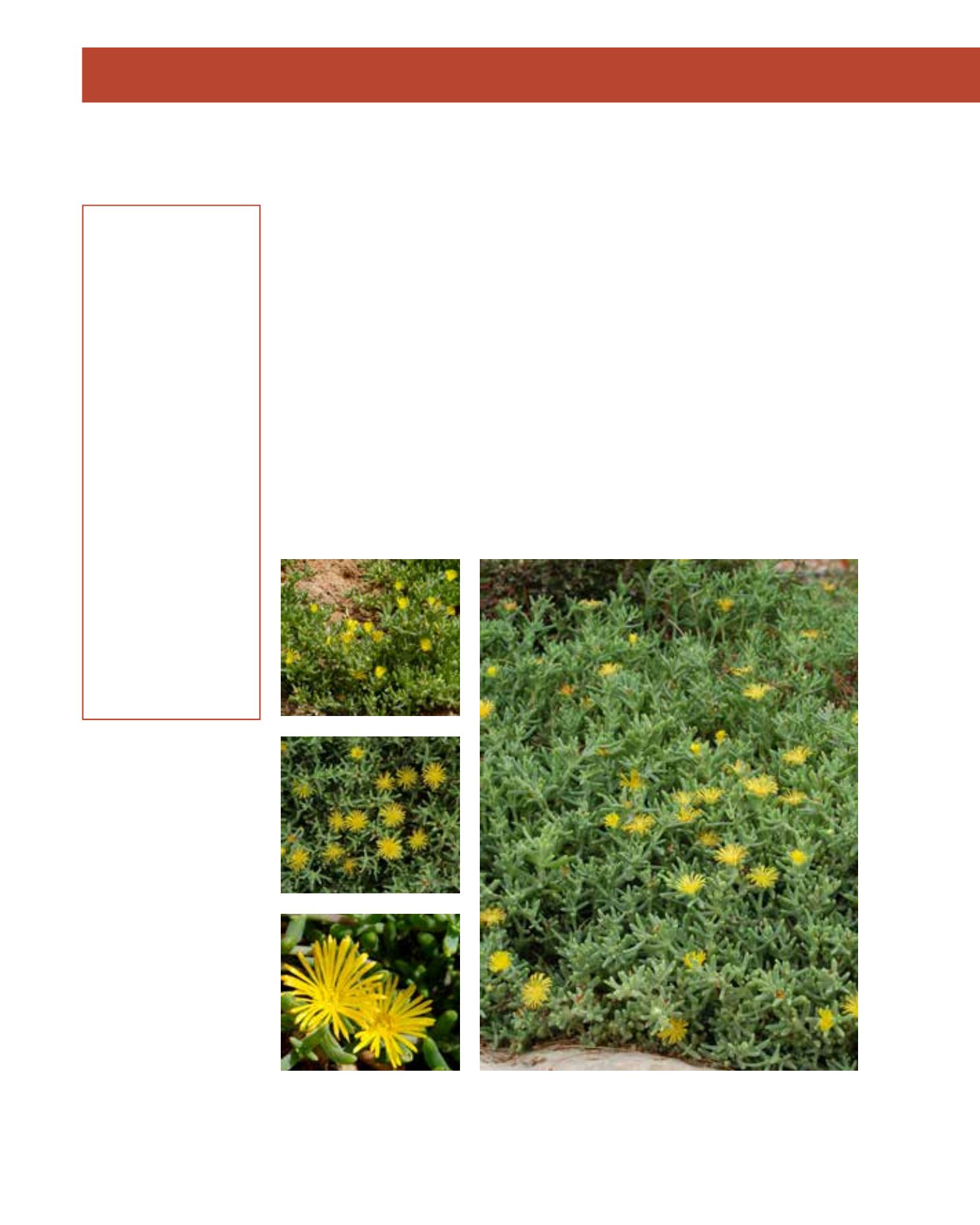

GENERAL
Origin
:
Mediterranean,
sub-tropical
Vigour
:
fairly fast
growing
Humidity
:
semi-arid, semi-
humid, very
humid
Propagation :
cuttings
Maintenance :
low
CONDITIONS
Urban climate :
resistant
Dessication :
resistant
Stagnant water :
vulnerable
Irrigation
:
low
Salinity/ppm :
high (4000 ppm)
Hardiness
:
-9°C
SHAPE
Type
:
cacti, succulents
Height
:
0.2 m-0.6 m
Spread
:
0.3 m-0.9 m
Foliage
:
evergreen
FLOWER
Colour
:
yellow
Size
:
4 cm
Period
:
April - May
FRUIT
Type of fruit :
capsule
Fruit size
:
0.8 cm
The Yellow Vygie is one of more than 220 species of this genus, which makes it the largest group
within the ice plant family (Aizoaceae). Glaucus is the Greek word for blue, and refers to the co-
lour of the three-angled leaves that protect this perennial from glaring sun. The plant grows fairly
quickly to build a dense cushion up to 60 cm in height, but usually much lower, forming mats
of some 20 cm. Large, sulphur-yellow flowers cover the plant in spring. If pollinated by insects,
the flowers develop into woody capsules that contain numerous seeds. It grows in full sun to
partial shade, tolerates heat but also survives frosts up to –10°C. Tolerating a considerable period
of drought makes the Yellow Vygie interesting for xeriscape (water-wise) uses. Frequent watering
is appreciated, but the plant may quickly be overwatered in heavy soils. Propagation is simple by
cuttings, but the surface must callous before planting. The plants also grow well from seeds. Cap-
sules swell up after sufficient rain only to release seeds when there is a sufficient amount of water
to ensure successful germination. This robust plant gives a showy display without much effort.
It is an ideal groundcover or group plant for low-maintenance gardens, parks and in containers.
Infestations are rare, but weak plants may be attacked by scale, which requires treatment with a
systemic pesticide. Some compost is welcome, although the plants are used to poor and alkaline
soil conditions.
181
Lampranthus glaucus,
Aizoaceae
Noon Flower,
Yellow Vygie
















